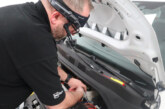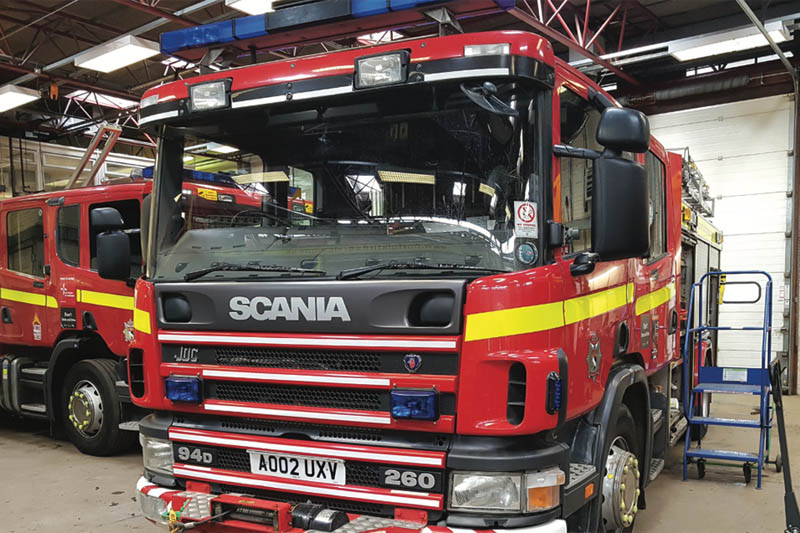
CVW teams up with Rotronics to ensure that you get the best out of your batteries during winter.
Preparing your fleet and workshops for winter, whilst also managing the fluctuations of the COVID-19 emergency, may provide some additional battery related challenges for fleet managers and owners. The initial COVID- 19 lockdown, in theory, should mean that there is a reduced requirement to replace batteries; but this period has also meant that many batteries have not been maintained.
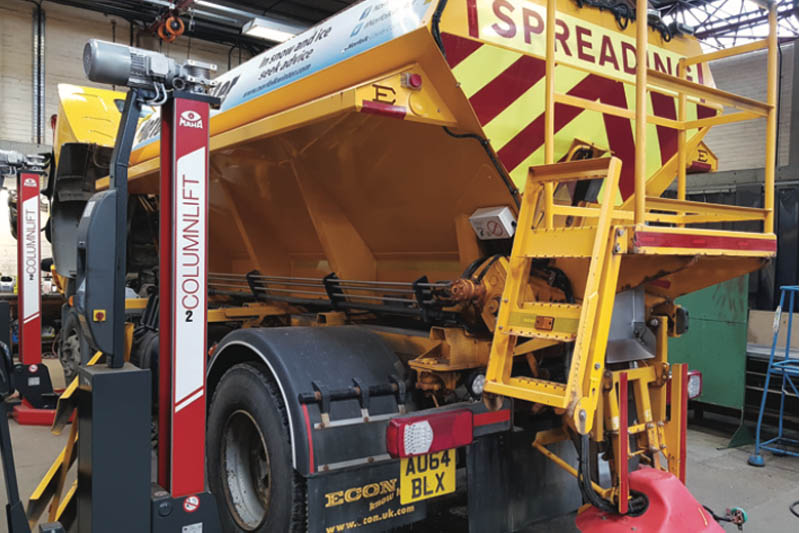
ROBIS is an industry-first, web-based dashboard and proactive battery management reporting system from Rotronics, which is ideal for remote working. The system allows remote access to workshop battery data and reports, with wirelessly uploaded test results as they happen, giving clear visibility regarding workshop productivity.
The following analysis shows ROBIS- reported testing by commercial workshop customer segments over Winter 2019 (Nov 2019-Feb 2020) during routine maintenance and represents 93,000 battery tests.
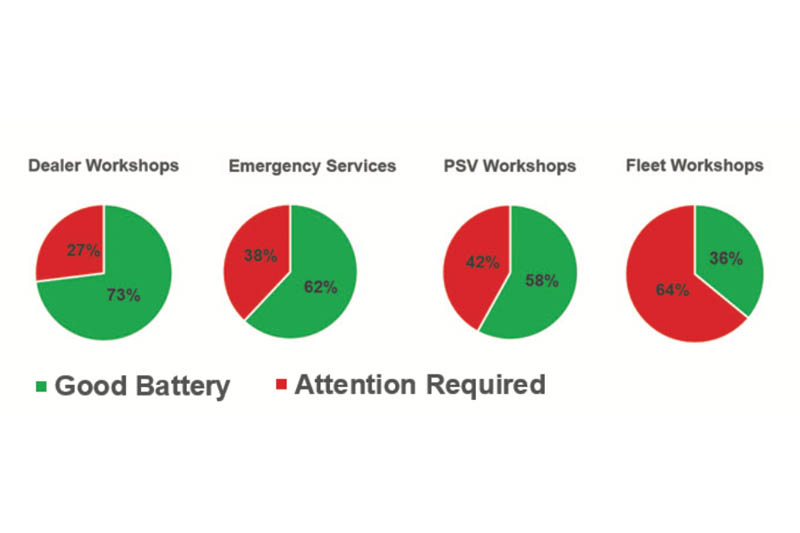
The data shows that dealer workshop vehicles are least prone to battery-related issues. However, 27% of batteries that have been tested still require attention. Whereas, fleet vehicles were most exposed to problems, with a staggering 64% of all batteries tested – as part of routine maintenance – requiring either charging or replacement.
Ken Clark, Managing Director at Rotronics, comments: “Compare this trend to this summer’s performance and it doesn’t get much better. However, we have had the impact of COVID-19 with vehicles having been ‘laid up’ and inoperative sometime during this period.
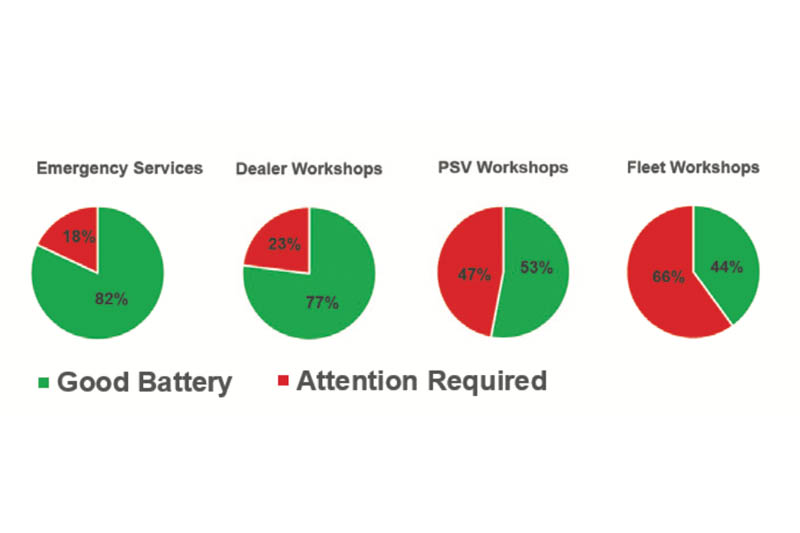
“Temperature drops will alter a battery’s performance and, in extreme chill, this can be as much as a 50% dip. The shorter days increase power demands on all vehicles with lighting, heating systems, electrics, heated seats, and de-misting windows, etc.”
The Rotronics Battery Management Programme will help you focus on key points for success. Ken Clark states: “Prepare the fleet well in advance because battery problems can account for around 20% of costs.”
Step 1– Visual inspection
Check batteries for any damage; you should be looking for corrosion, excessive electrolyte staining, and gassing. Can you hold down the clamps? Are the terminals secure and free from dirt or corrosion? Are the electrolyte levels maintained?
Step 2– Test and charge batteries
As part of regular vehicle inspection, make sure that:
- Batteries are charged at every opportunity
- Any batteries that have been jump started are tested as this can disguise an underlying problem
- The batteries are above 12.5V to prevent excessive deep cycling and risk of sulphation – the root cause of premature battery failure and unnecessary replacement costs.
- Batteries are in balance – 24V battery sets will only perform efficiently with both voltages and cranking amps being of similar values
- Never top up batteries that are FLAT with electrolyte
- Always charge first, providing that the cells aren’t exposed
Top tip: If you are using non-maintenance free batteries, be mindful when checking the electrolyte levels that if the battery is in a low state of charge, the electrolyte will be lower than expected. If a flat battery is topped up with electrolyte, there is a high risk that the battery will be overfilled, and the cells expand as the battery takes on board current.
Step 3– Vehicle health check
Once the batteries are in good health, balanced and charged, ensure that the charging system is also performing as it should. You must:
- Ensure the starter system is working correctly
- Check the alternator output
- Ensure there are no excessive drains present, which can cause batteries to go flat very quickly.

